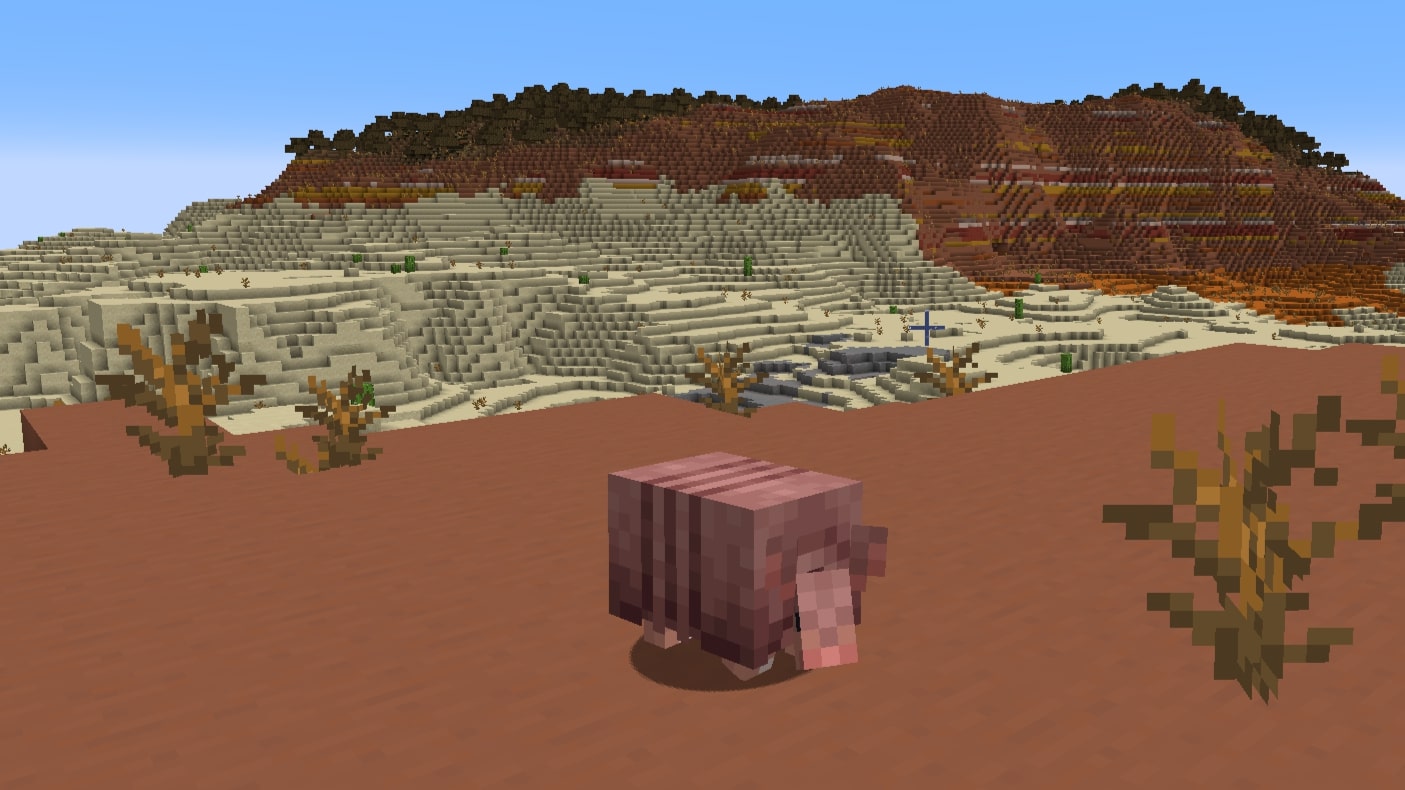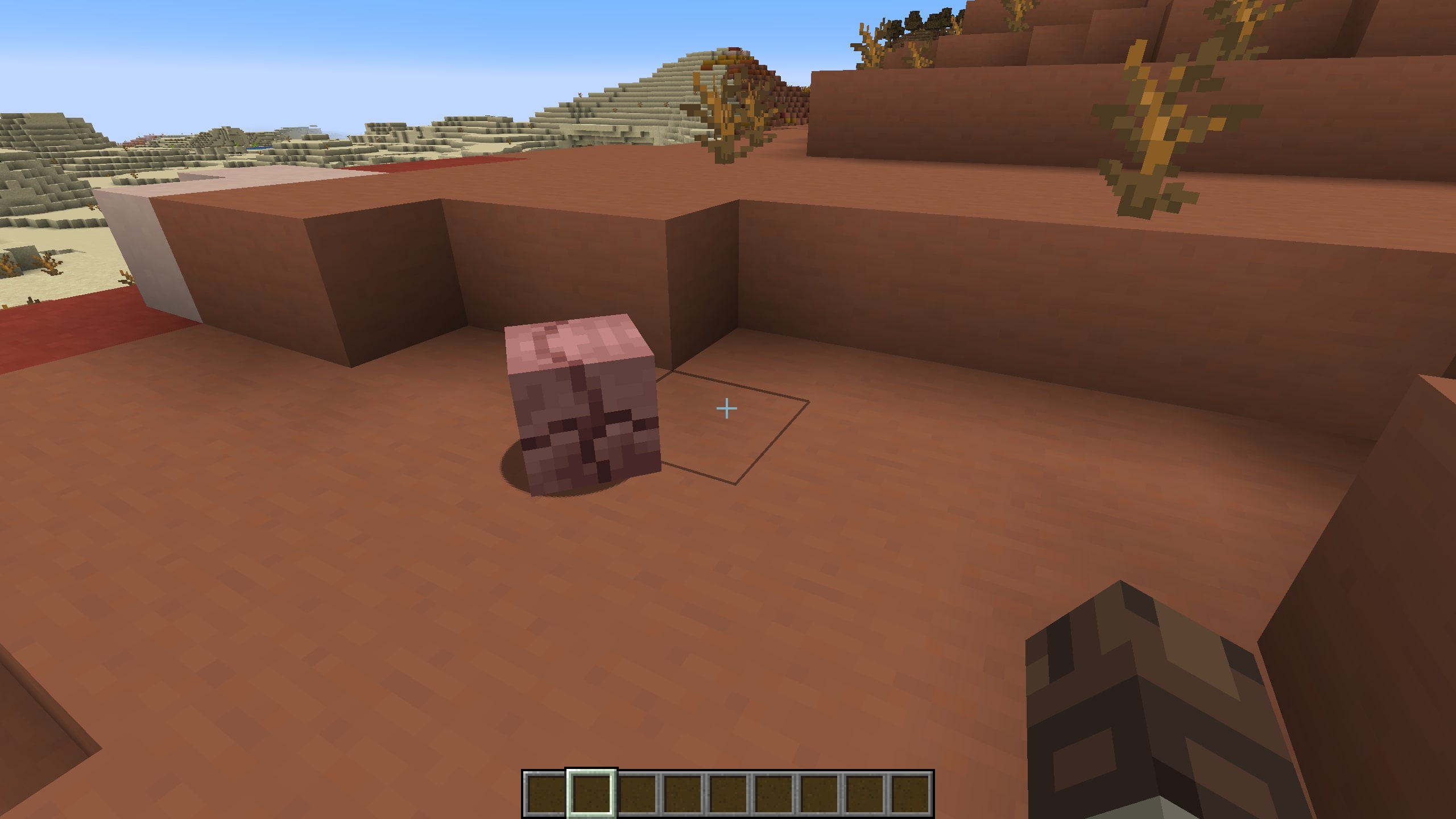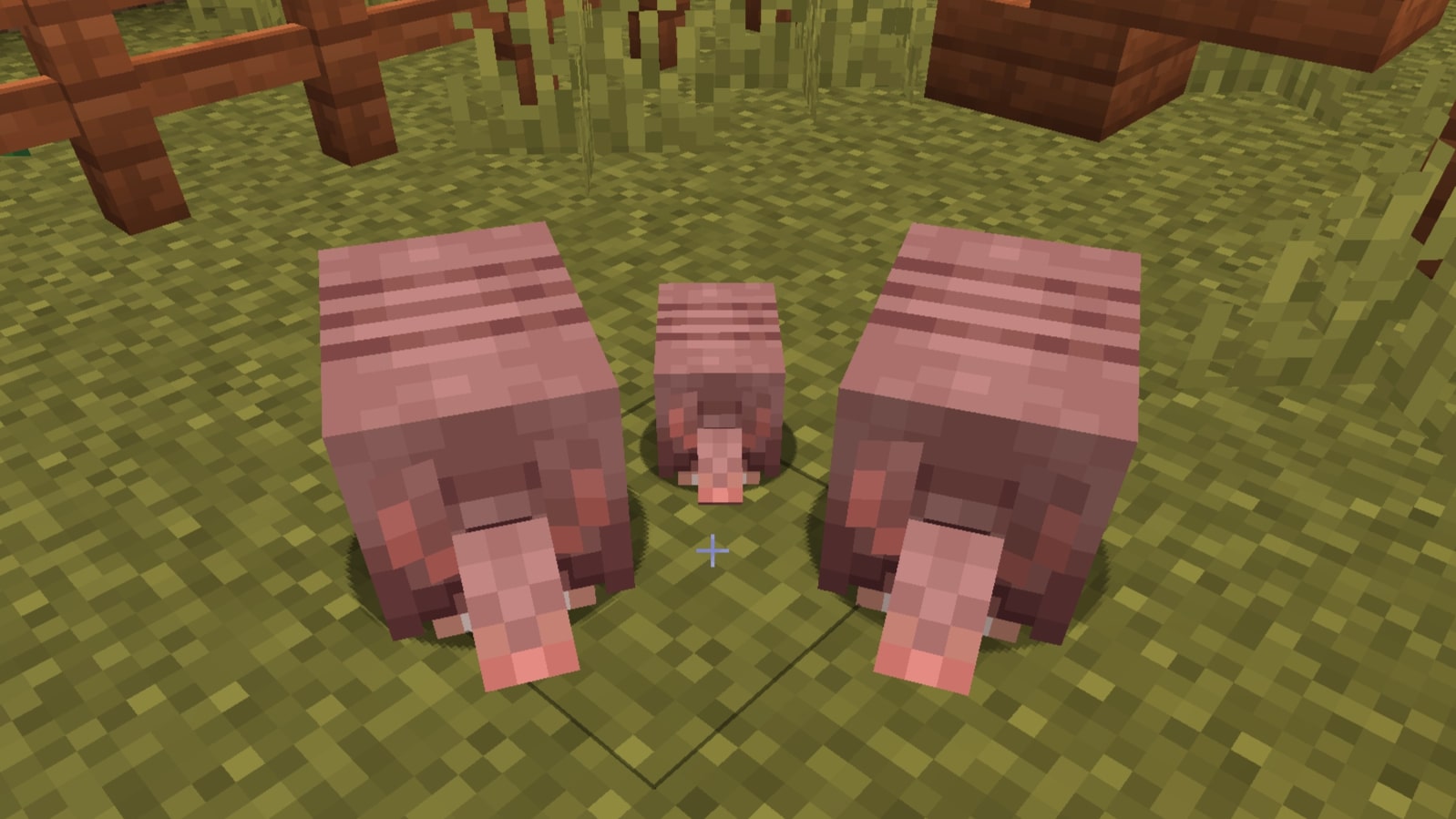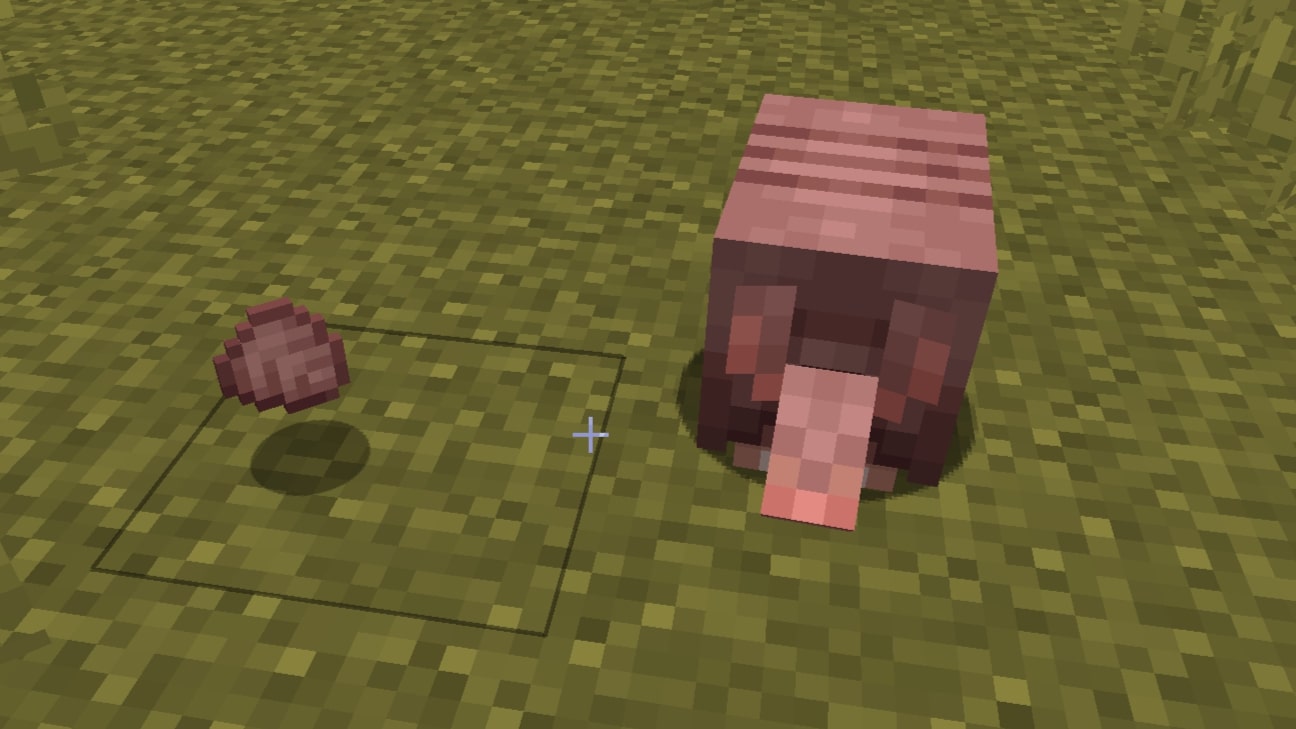Minecraft Armadillo guide: Update release date, Wolf Armor, Scute, breeding, and more
Everything you need to know about one of Minecraft 1.21's most exciting new mobs.
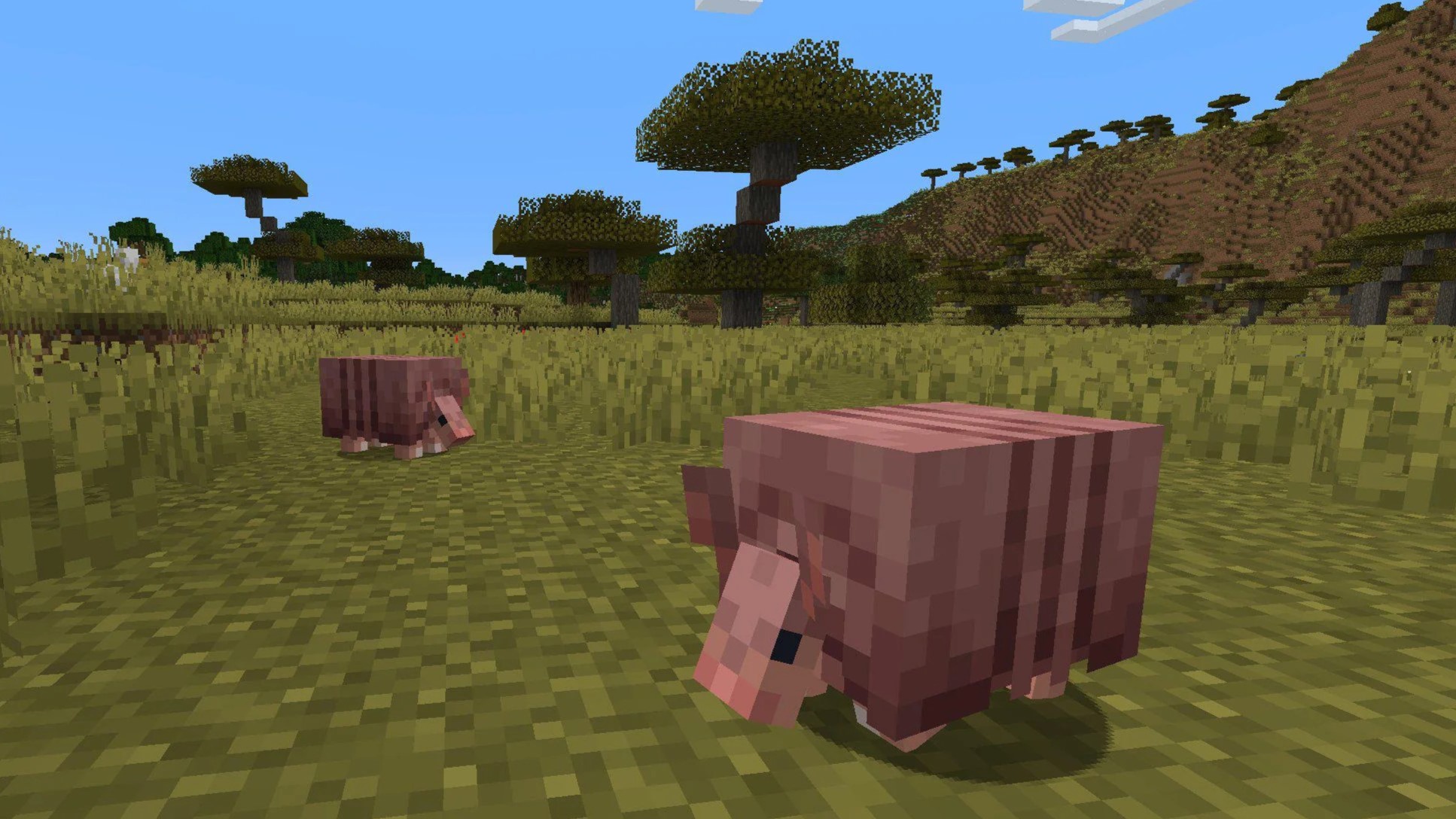
One of the best things about Minecraft is that it has a ridiculous number of different mob creatures for players to encounter as they explore its procedurally generated worlds, with new updates adding more every year. The next critter on its way to Mojang Studios' titanic sandbox survival game is the Armadillo, and once it finally arrives, both cuteness enjoyers and tamed Wolf owners will want to seek it out as soon as possible.
Since it won the Minecraft Live 2023 Mob Vote last year, there's a ton we've learned about the Armadillo in blog posts, previews, and more from developer Mojang. To help you find all the details you need to know, we've documented all of that information here in this guide. Below, you'll find a complete overview of the Armadillo's expected release date, behavior, biome spawn locations, breeding mechanics, favorite food, and more — including how you can use their drops to make powerful armor for your pets.
What are Armadillos in Minecraft?
The adorable Armadillo is one of the two new mobs coming in the Minecraft 1.21 update (the other being the Breeze). Like many creatures in the game, it has neutral, peaceful behavior and won't fight players or other mobs even when attacked.
It has fairly low health at just six hearts — equal to 12 hit points — but that weakness is offset by the fact Armadillos curl up into a ball to protect themselves, just like the real-world animals they're based on do. Armadillos curl up whenever they take damage, are near undead mobs, or are near a sprinting or mounted player. While in this defensive state, damage done to the Armadillo is reduced by one point and then divided by half. This makes them tough to kill with accidental strikes, though they can still take extreme damage if hit with a high-tier weapon like a Diamond Sword before they curl up in their armor. If the Armadillo doesn't detect threats for three seconds while curled, it will unroll and resume walking around.
Notably, the Armadillo is not immune to fall, fire, lava, or drowning damage, and is not able to roll into its armor if it's in the air or trying to swim in water or lava.
Another unique thing about the Armadillo is that both Spiders and Cave Spiders are afraid of it, likely due to the fact armadillos eat spiders (and many other bugs) in real life. As a consequence, these arachnid mobs will always try to get far away from Armadillos, even if they're near an entity they're hostile to (like players and Iron Golems).
Minecraft Armadillo: Update release date
We typically don't find out when Minecraft updates are scheduled to come out until their release date is close, and the same can be said of Minecraft 1.21. Though Mojang has been testing 1.21's content — including Armadillos — in snapshots and previews since October 2023, the studio has remained tight-lipped about when players can expect the patch's launch.
All the latest news, reviews, and guides for Windows and Xbox diehards.
With that said, though, we guesstimate that Minecraft 1.21 and the Armadillos it's adding will likely come out at some point in summer 2024. This assumption was made based on the release windows of previous major Minecraft updates, as well as the fact that a summer launch would put 1.21 roughly a year after 2023's Trails & Tales update.
I'll update this section when we know more. Until we do, though, you can always jump into the latest Minecraft: Java Edition snapshot or the Minecraft Preview on Bedrock to have some fun with the Armadillos ahead of 1.21's official release.
Minecraft Armadillo: Biomes and spawn locations
Some mobs in Minecraft spawn almost everywhere, while others have very specific biomes and spawn locations they can appear in. The Armadillo can only spawn naturally in the Savanna or Badlands biomes, making it one of the latter.
Savannas are characterized by their olive-colored grass and leaf blocks, the presence of acacia trees, and an arid climate with no rain. Badlands (also known as mesa biomes) are also arid, but are different in that they typically generate near Deserts and are distinguished by their lack of vegetation and mounds of warmly colored terracotta.
Generally, Armadillos seem to be more common in Badlands, as fewer mobs can spawn in these biomes overall compared to Savannas. Therefore, these biomes are the best to visit if you're seeking Armadillos out.
Minecraft Armadillo: Breeding and food
Much like Wheat can be used to lead Cow or Sheep mobs to an enclosure and then fed to them so that they'll breed and have a baby, it's possible to do the same with Armadillos and their favorite food, Spider Eyes. These frequently drop from slain Spiders and Cave Spiders (they also drop from Witches or Desert Temple chests).
Here's a step-by-step process that goes over how to use Spider Eyes to breed Armadillos:
1. First, put a Spider Eye in your hotbar and hold it in your hand while near one or more Armadillos. All nearby Armadillos will walk up to you, indicating that they'll follow you.
2. Next, lead the Armadillos to wherever you want to breed them. This can be anywhere, but I recommend bringing them to a fenced-off enclosure with a gate. By leading them here and then closing the gate, you'll prevent the Armadillos from wandering off.
3. Then, feed any two Armadillos a Spider Eye and they'll breed, creating a Baby Armadillo (and a small amount of XP). Cuteness overload!
Note that Baby Armadillos grow into adult Armadillos after 20 real-world minutes of time spent in-game, though you can feed the baby a Spider Eye to speed this up by 10%. Once fully grown, the offspring Armadillo can breed with other Armadillos and produce Armadillo Scute just like wild ones can.
Minecraft Armadillo: How to get Scute
So, we've covered where to find Armadillos and how to breed them, but why bother? The answer is Armadillo Scute, which is a new resource item in Minecraft that comes exclusively from the mob. Its purpose is to be used for Wolf Armor, though Mojang may one day add it to other crafting recipes as well.
Killing these adorable critters just to get some armor plating would be incredibly sad, so it's a good thing you don't have to. Armadillos will naturally drop an Armadillo Scute every 5-10 minutes, though you can also use Brushes (1 Feather, 1 Copper Ingot, 1 Stick) on the mobs to get as many as you need.
Something to keep in mind is that without enchantments, Brushes will break after you obtain four (Java Edition) or five (Bedrock Edition) Scute from an Armadillo. For a Brush to withstand more, you'll need to enchant it with Unbreaking (or Mending; XP will repair it when collected, in that case).
Do Armadillos have other drops?
Currently, Armadillos don't have any other drops, meaning that — ridiculous cuteness aside — the only reason to seek them out is to use them to get Armadillo Scute for Wolf Armor. Mojang may give Armadillos additional drops in future updates; if it does, I'll update this section with the latest information.
Minecraft Armadillo: Wolf Armor crafting recipe
You've got your Armadillos, and you've gotten plenty of Armadillo Scutes. Now it's time to use them to make Wolf Armor for your furry friend and give them significant protection in combat — perfect for all those new Wolf variants you'll be taming!
The image above shows the crafting recipe for Wolf Armor, which you can also find within the in-game Recipe Book by searching "Wolf" and then selecting the Wolf Armor icon. To make it, place six Armadillo Scutes in a Crafting Table's 3x3 grid in the vague shape of a Wolf, with the "head" at the top left.
How Wolf Armor works in Minecraft
Once you've made a suit of Wolf Armor, you can equip it on any tamed Wolf by holding it in your hand and right-clicking/pressing left trigger while looking at your Wolf. From then on, it will remain on the Wolf and protect it from damage until it breaks, the Wolf dies, or a player uses Shears on the Wolf.
Unlike player armor that reduces incoming damage by a percentage, Wolf Armor blocks all damage completely (notable exceptions include freezing, drowning, suffocating, and damage from magic, the Wither effect, and the Thorns enchantment) thanks to some recent buffs, effectively making the Wolf wearing it invincible until the armor is broken. As its durability gets reduced by hostile mob attacks, audio queues will play and it will become more and more visibly damaged; the armor can be repaired on Anvils with Armadillo Scutes, however.
By default, Wolf Armor has a light brown color, though it's worth mentioning that like Leather Armor, Wolf Armor can be dyed by combining it with a dye on a Crafting Table (Java Edition) or by using it on a Cauldron filled with dyed water (Bedrock Edition). In both versions of Minecraft, you can remove dye from Wolf Armor by using it on a Cauldron with clean water in it.
Minecraft is one of the best Xbox games and best PC games in history, and with all the goodies like Armadillos coming in update 1.21, it's poised to get even better. You can permanently own Bedrock Edition on Xbox and Java Edition on PC by picking up the game for $30, or you can play it through Microsoft's buffet-style Xbox Game Pass gaming service.

Brendan Lowry is a Windows Central writer and Oakland University graduate with a burning passion for video games, of which he's been an avid fan since childhood. He's been writing for Team WC since the summer of 2017, and you'll find him doing news, editorials, reviews, and general coverage on everything gaming, Xbox, and Windows PC. His favorite game of all time is probably NieR: Automata, though Elden Ring, Fallout: New Vegas, and Team Fortress 2 are in the running, too. When he's not writing or gaming, there's a good chance he's either watching an interesting new movie or TV show or actually going outside for once. Follow him on X (Twitter).
